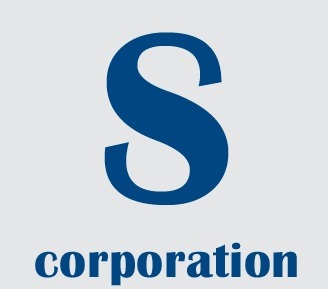Disclaimer: Our content is for informational and educational purposes only, It's not intended to be a substitute for professional legal or tax advice. Our work is supported by affiliate commissions. We may earn money or products from the companies mentioned in this post.
When starting or rebuilding the structure of a business, one common question business people ask is, “Is it better for me to have an S corporation?”. Before you decide to turn your company into an S corporation, please read this article below. Here, we will discuss what an S corporation is, how you can apply for it, and how S corporations are taxed.
Definition of S corporation
An S corporation is a company that falls under sub-chapter S of IRS’s Internal Revenue Code. Therefore, it is called an S corporation.
Generally, an S corporation will look very similar to a traditional C corporation (a company that falls under subchapter C of IRS’ Internal Revenue Code). An S corporation will have a board of directors, officers that operate the business, and stock shares.
The IRS, however, has stricter rules and requirements for an S corporation. First, an S corporation can only have a maximum of 100 shareholders. These shareholders must be U.S. permanent residents or citizens. Also, these shareholders must be individuals, specific trusts, or any other tax-exempt establishments that fall under 501(c). (3) category. 
These shareholders also can’t transfer and sell their shares. IRS has this restriction to avoid S corporations having ineligible shareholders in their company.
Secondly, an S corporation will be taxed only on the shareholder level individually. It means it will not be double-taxed on the corporate level. We will discuss deeper about taxation in the latter part of this article.
Lastly, an S corporation can issue stock but is limited to one class of stock only. This restriction can limit the potential growth of the corporation. Despite all the rules and restrictions on the S corporation, you may still get more benefits depending on the condition of your business.
Applying for S corporation
To form an S corporation, you must register your company as a C corporation first. Once you already form a C corporation, you can start applying for an S corporation.
Remember, to legally classify your business as an S corporation, you have to meet all the requirements stated above. Having a maximum of 100 shareholders (all of them must be U.S. permanent residents or citizens) and having only one stock class.
The requirements above should not be difficult to meet for an established business. If you have met them, then you can follow the steps below.
- Go to your local Secretary of State and reserve your legal business name.
- File your Articles of Incorporation to the Secretary of State.
- Make stock certificates for your initial shareholders.
- Make business license applications specific to your current industry.
- Apply for Form SS-4 to obtain an Employer Identification Number. You can do it online on the IRS’ official website.
- Apply for other files and documents required by the government agencies. Different states may have different requirements. Most likely, your business will be required to pay disability, unemployment, and other payroll taxes.
- Finally, you can file IRS Form 2553. If you want your S corporation status to take effect immediately, you must file this form within 75 days of the start of the fiscal year.
If you have completed all the steps above, you will have to wait for confirmation from the IRS. When the IRS accepts it, you can then enjoy your business’ new status as an S corporation.
S Corporation’s tax and benefits
As we have discussed in the previous part, we will now walk about how are S corporations taxed. Tax reduction is one of the main reasons why business owners change their business into an S corporation.
An S corporation uses Form 1120s to file its annual tax return. Unlike a C corporation that files its tax documents quarterly, an S corporation only needs to do it annually.
An S corporation can be categorized as a “pass-through” business entity. An S corporation may pass its income, losses, credits, and deductions to its shareholders. Its shareholders then will report any of their income and losses on their tax returns and pay their taxes only at ordinary rates.
An S corporation will need to file a corporate tax return at the standard 21% income tax rate at the corporate level. Furthermore, an S corporation will pay tax on their capital gain.
Also, in an S corporation, these shareholders can avoid self-employment tax on their business profit shares. These shareholders will not pay self-employment tax when they get their dividends and they only have to pay tax on their salary.
This rule regarding self-employment tax is usually misused by business owners who also work as employees to pay less tax by paying themselves an unreasonably small amount of salary. Therefore, they can receive more money from the dividends because, in an s corporation, the dividend is not subject to the self-employment tax.
Because of this practice, the IRS will usually scrutinize how do S corporations pay their employees and share their corporate distributions. The IRS will require an S corporation to pay a reasonable amount of salary to their employee. Especially if its shareholders also act as employees.
Conclusion
The operational structure of an S company doesn’t differ a lot from a traditional C corporation. One obvious difference between them is the tax structure. The rules and restrictions on an S corporation will decide whether an S corporation scenario is the right choice for your business.
If you don’t want to go for an Initial Public Offering (IPO) and are not planning to have more than 100 shareholders, then you can try S corporation. An S corporation suits best for small businesses that don’t plan for immediate and aggressive business expansion.
The limitations of the number and the type of shareholders can hold your business’ growth and expansion. Therefore, if you are planning to do an IPO and trying to gain investments from other countries, it is better to stay as a traditional C corporation.
For the business owners, moreover, if the shareholders are individuals with high-income who pay high personal tax brackets, it might be a better idea not to turn into an S corporation. Your shareholders will not get optimal benefit from turning into an S corporation.
For most businesses, the decision to turn into an S corporation will come down to how well the company plans to strive in the future years. For companies who want to grow immediately, it is not recommended to turn into an S corporation.
In conclusion, S corporation works best for small private companies who want to save money from their taxes. Make sure you never break any rules and restrictions. Any obstructions of rules and restrictions can result in the terminations of your S corporation status by the IRS.
